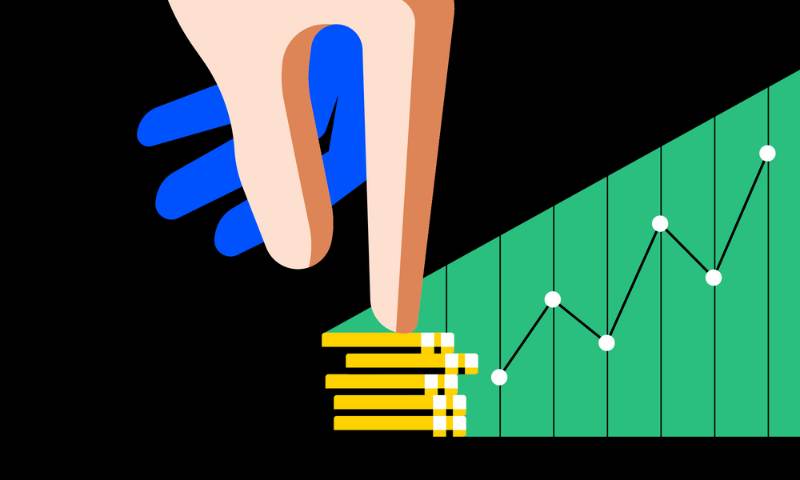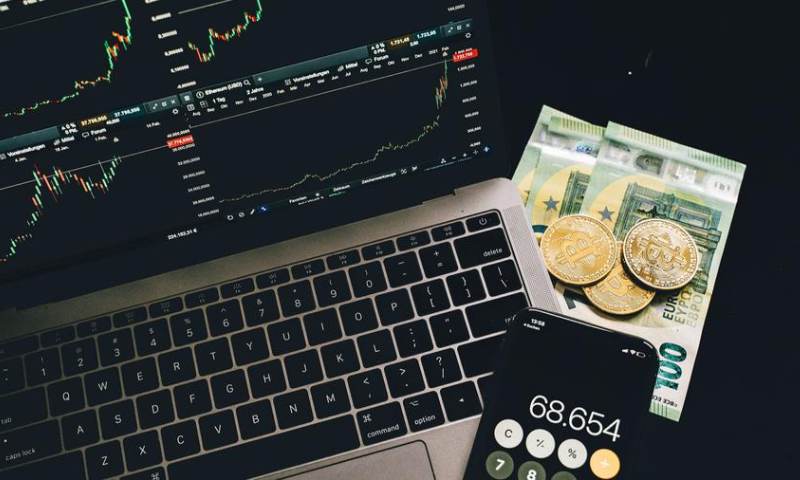Cryptocurrency Demystified: Unraveling the Digital Currency Phenomenon
You’ve heard it buzz around the net: Cryptocurrency. It’s more than just a trend; it’s a whole new way of thinking about money. What is this digital currency craze? Here’s your chance to get the scoop. I break it down in terms everyone can get. We’ll start with the definition and explanation of cryptocurrency and dive into how this tech could change your wallet – and maybe the world. With Bitcoin leading the march and altcoins adding flavor, understanding crypto is now a must. And with me as your guide, you’re in good hands. Let’s demystify digital cash together, shall we?
Understanding the Basics of Cryptocurrency
The Operating Principles of Digital Currencies
What is cryptocurrency? In simple terms, it’s online money that lets you buy things or exchange value. Unlike dollars or euros, you can’t hold it in your hand. It’s made using blockchain technology, which is like a digital ledger that records all transactions. With this tech, digital money is kept safe and secure. Kids, think of it as a super-safe piggy bank that no one can open but you.
Now, how does cryptocurrency work? When someone sends cryptocurrency, the transaction is recorded on a blockchain. This blockchain is managed by lots of computers agreeing on transaction details, a bit like a group school project where everyone shares their work. This means no one person or group has control, keeping it fair for everyone.
From Bitcoin to Altcoins: Diverse Crypto Coins Introduction
Bitcoin was the first cryptocurrency, born in 2008 by someone named Satoshi Nakamoto. Today, we have many different kinds of cryptocurrencies called altcoins. This includes names like Ethereum, which lets you use smart contracts. That’s like making a deal where the outcome is automatic once the rules are met. Think of it as a vending machine that gives you your favorite candy once you put the right coins in.
Each digital currency has a wallet which is like your personal online bank for storing your money. Just like each bank account needs a unique number, wallets use something called public and private keys. They are super-secret codes that let you access your money. It’s like having a secret handshake with your best friend that no one else knows.
Mining is a process some cryptocurrencies use where new coins are made. People use their computers to solve complex puzzles, and when they get it right, they earn new coins as a reward. Imagine getting gold stars for solving the hardest math problem in class – that’s how mining feels.
These are the building blocks of the whole crypto world. It’s a space full of new terms and ideas, but at its heart, it’s all about creating a way to exchange value that’s quick, borderless, and secure. Through understanding the basics, you’ve taken the first step in unraveling the colorful ball of yarn that is the modern phenomenon of digital currencies!
The Underpinnings of Cryptocurrency: Blockchain Technology
How Cryptocurrency Works: A Technical Perspective
Let’s dive into how cryptocurrency works. Picture it like online cash, but way smarter. It’s made using something called blockchain technology. It’s a chain of data blocks, and it’s very safe. Each block holds a bunch of transactions. When someone wants to send some crypto, they start a new transaction. This transaction is sent out to a huge network.
People all over the world help confirm it’s all good. They solve tricky puzzles to prove the transaction is legit. This process is called mining. When they’re done, a new block of data is added to the chain. Now, everyone can see the new transaction. It can’t be changed or deleted. Ever. That’s a big deal!
Let’s say you want to know more about Bitcoin. Bitcoin was the first-ever crypto coin, started by someone named Satoshi Nakamoto. There are other coins too, like Ethereum.
Decentralized Finance and Smart Contracts in Crypto
Now let’s talk about something really cool called decentralized finance, or DeFi for short. It’s all about handling money without banks. Imagine you want to loan some cash to your friend. Normally, you’d need a bank. With DeFi, you can do it without one. All you need is a smart contract on the blockchain.
So, what’s a smart contract? It’s like a promise written in code. It might say, “If my friend gives back my money on time, they get a little reward.” Since it’s on the blockchain, no one can mess with it. If your friend pays back on time, the smart contract auto-magically gives them their reward. If not, no reward.
Crypto opens up a whole new world of possibilities. It means that people who couldn’t use banks before, maybe because they lived too far away, can now handle money online. It’s like being your own bank, with just your computer or phone.
Remember how we talked about mining cryptocurrency? That’s a big part of how this all keeps running. Mining also makes new coins. It’s not like digging in the ground though. It’s computers working super hard. And when they crack the code, they make new coins as a prize.
Lastly, let’s touch on why security matters. Crypto uses a kind of math magic called encryption. It keeps your money safe. You have these things called keys. One is public, like your crypto address, and one is private, like the key to your crypto safe. Keep that one secret!
So, why does this even matter? Well, people want control over their money. They want it to be safe and move it around fast. Cryptocurrency does that. It’s a big shift from the paper money we use today. It’s taking off, and many folks, maybe even you, are getting interested. Thanks to the blockchain, we’ve got a way to keep digital money in check, and that’s pretty awesome.
Navigating the Cryptocurrency Market
Trends in Digital Currency and Cryptocurrency Investment Strategies
What is cryptocurrency, you may wonder? Simply put, it’s digital money. Powered by blockchain technology, it enables secure trades. This tech is like a ledger. It keeps a clear record of all trades. Nobody can change the records. That’s why people trust it.
Cryptocurrency market trends are always changing. Smart investors watch these trends. They plan their moves. They learn when to purchase or sell their digital assets. Buying low and selling high is their goal, like with stocks. Yet, doing this takes skill and nerve. Crypto prices can rise or dip sharply. Staying updated on market news is vital.
Investment strategies differ from person to person. Some buy and hold their crypto, betting on long-term gains. They’re called “hodlers”. Others trade often, trying to earn from price moves. Some strategies are simple. Others use charts and guess trends. Understanding crypto helps in choosing a strategy.
Understanding Crypto Transactions and Wallet Security
How cryptocurrency works is a common question. New coins often start via mining. People solve tough math problems using computers. They get new coins as rewards. Trading crypto is like exchanging money. But instead of banks, we use digital wallets and direct trades.
A wallet for cryptocurrency is like your pocket wallet. It holds your digital coins. Each wallet has keys – one public, one private. The public key is like your mailbox. Anyone can drop a coin in. The private key is like your safe lock. It keeps your coins secure. No one but you must know it.
Wallet security is crucial. Cyber attackers can steal your private key. Then they can take your coins. To stop them, wallets use encryption and security. Think of it like a super safe lock for your digital money.
Crypto transactions use peer-to-peer networking. This means users deal with each other directly. No middleman, no extra fees. It’s faster and private. But with no middleman, you must be extra careful. Always double-check who you’re sending coins to.
Smart contracts in crypto are like digital promises. They execute rules when conditions are met. Say, sending coins when a task is done. No need for a third party. This is part of decentralized finance. It’s a system not run by any bank or government.
Cryptocurrency investment is not just about buying coins. It’s about knowing the risks and securing your assets. It’s a thrilling mix of tech and money. With care and knowledge, you can navigate this market. The key is education, watching trends, and staying safe online.
To keep your journey smooth, learn as much as you can. This market is vast, but with caution and smart moves, you can find success. Stay tuned to the latest news and follow secure practices. Your crypto journey is only just beginning.
The Future Landscape of Cryptocurrency
Cryptocurrency Regulations and Their Impact on Digital Assets
Let’s talk about rules—for crypto! Just like games have rules, so does money. And the digital money world is starting to get rules too. That’s what folks call ‘regulations’. They help make sure things are fair and safe when people buy or use digital money, which we also call cryptocurrency.
What’s happening with these rules? More countries are making them now. These rules decide how we use crypto and keep our money safe. Suppose a country says, “We like crypto; let’s use it!” Then more people there will want to use it, and it becomes more popular. But if a country says, “We’re not sure about this crypto thing,” and makes tough rules, people might not use it as much. And that can make it less popular.
Why do we care about these rules? Because they can change how much our digital money is worth. With good, clear rules, more people trust and use crypto, and that can help its value go up. But with strict rules or if governments say, “No crypto here,” that can make its value go down.
The Evolving Cryptocurrency Ecosystem and What Lies Ahead
Imagine a garden, but with money growing instead of flowers—that’s kind of like the cryptocurrency world. It’s always growing and changing, with new types of digital money. People are finding cool, new ways to use it, from buying a soda to buying a house!
We’ve got different kinds of digital money called ‘altcoins’—they’re like the cousins of Bitcoin, the first one. And there are these things called ‘smart contracts’ that help us trade and do business without needing a middle-man. They’re smart because they follow rules all by themselves, like magic—no humans needed!
And, oh, the places crypto can go! In the future, crypto might be everywhere. We might use it to pay for stuff just like cash or cards. Maybe our jobs will even pay us in crypto. That’s not so strange, ’cause some places are starting to do it right now.
But hold on to your hats because it’s not smooth sailing. Crypto prices can jump up and down like frogs. That can be scary, but some think it’s a chance to make money if they buy low and sell high. It’s like a game—some win, and some don’t.
So, what’s next for crypto? Nobody has a crystal ball, but it seems like it’s here to stay, getting bigger and touching more parts of our lives. It’s a wild, exciting trip, and we’re all on it together. The main thing? We gotta stay smart, stay safe, and keep learning as we go.
In this post, we dove into the world of cryptocurrency, from its basic mechanics to the advanced tech that powers it. We explored how digital currencies like Bitcoin work and why altcoins add flavor to the crypto mix. We uncovered how blockchain stands as the backbone of all cryptos, enabling secure transactions without central control.
We also navigated the market’s trends, pinpointing smart ways to invest and keep your digital wallet safe. Lastly, we looked ahead at how rules might shape the future of crypto and the exciting changes on the horizon.
My final thoughts? Crypto isn’t just a buzzword; it’s a swiftly growing field teeming with potential. As you move forward, stay informed, be cautious, and watch as this dynamic landscape unfolds.
Q&A :
What Is Cryptocurrency and How Does It Work?
Cryptocurrency is a digital or virtual form of currency that uses cryptography for security and operates independently of a central bank. It’s decentralized and based on blockchain technology, where each transaction is logged in a public ledger that is accessible to everyone. Cryptocurrencies work through a network of computers that manage and record transactions using consensus algorithms.
What Are the Key Features of Cryptocurrency That Differentiate It From Traditional Money?
Cryptocurrencies offer several distinctive features:
- Decentralization: Unlike traditional money managed by governments or financial institutions, cryptocurrencies are typically decentralized and operate on a peer-to-peer network.
- Encryption: Cryptocurrencies employ advanced cryptographic techniques, which make them secure from counterfeiting and double-spending.
- Transparency: The use of blockchain technology ensures that all transactions are recorded and visible, making the system transparent.
- Anonymity: While transactions are transparent, the identities of those making transactions can be protected, offering privacy.
- Limited Supply: Most cryptocurrencies have a cap on the number of coins that will ever exist, imitating the scarcity of precious metals.
Can You Explain Blockchain Technology in Relation to Cryptocurrency?
Blockchain is the underlying technology behind most cryptocurrencies. It’s a distributed ledger that records all transactions across a network of computers. Each ‘block’ in the blockchain contains a number of transactions, and every time a new transaction occurs on the blockchain, a record of that transaction is added to every participant’s ledger. It’s designed to be secure by nature and promotes a high level of integrity and auditability.
How Do You Acquire Cryptocurrency?
There are several methods to acquire cryptocurrency, including:
- Purchasing: Cryptocurrencies can be bought on various online platforms called exchanges, where you can trade traditional money for digital coins.
- Mining: Individuals can participate in cryptocurrency mining, which involves using computer power to solve complex mathematical problems that validate transactions and add new blocks to the blockchain.
- Earning: It’s also possible to earn cryptocurrency through certain services or platforms that pay users in crypto for performing tasks or jobs.
- Staking: Some cryptocurrencies allow you to earn additional coins by staking your existing cryptocurrency holdings to support the network and validate transactions.
What Are the Risks and Rewards of Investing in Cryptocurrency?
Cryptocurrency investments come with their own set of risks and rewards:
Rewards:
- High Return Potential: Many investors are attracted to the possibility of high returns, as some cryptocurrencies have shown substantial price appreciation.
- Diversification: Cryptocurrencies offer a way to diversify an investment portfolio.
- Innovation: Investing in cryptocurrencies means investing in a new technology that could potentially change the financial landscape.
Risks:
- Volatility: Cryptocurrency markets can be incredibly volatile, meaning the value of your investments can fluctuate wildly.
- Regulatory Uncertainty: As a relatively new asset class, cryptocurrencies face uncertain regulatory landscapes across different countries, which can impact their value and legality.
- Security Concerns: Despite the strong cryptography, there’s still a risk of hacking and theft, as seen with various cryptocurrency exchange breaches.
- No Guarantee of Success: There are many cryptocurrencies, and not all will succeed; some may lose value or become worthless.


